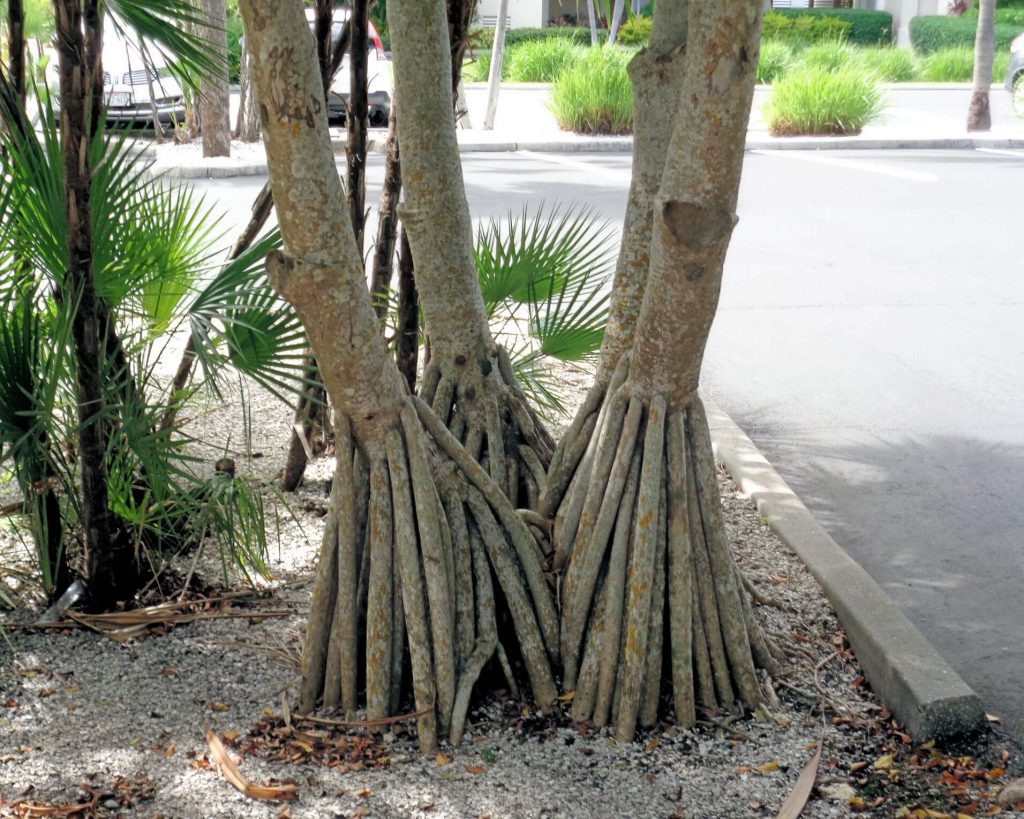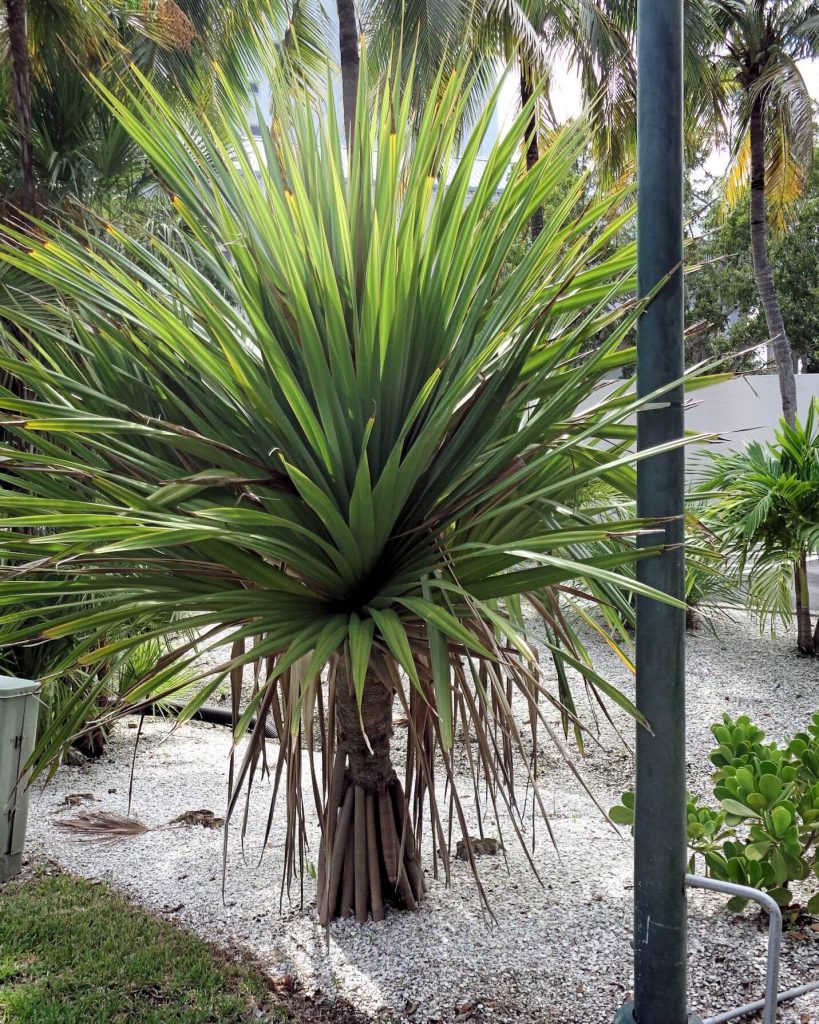 Ornamental plants get quite a few interesting names attached to them based on their appearance. One such plant is the screw pine. It is not a true pine, but it does have whorled foliage which could be interpreted as being in a screw-like pattern. While the spiny foliage could be looked at as if it were a giant pineapple, and its fruit is very pineapple-like in appearance, this interesting standalone plant has over six-hundred different species. Today, we will look at a common one called Pandanus utilis.
Ornamental plants get quite a few interesting names attached to them based on their appearance. One such plant is the screw pine. It is not a true pine, but it does have whorled foliage which could be interpreted as being in a screw-like pattern. While the spiny foliage could be looked at as if it were a giant pineapple, and its fruit is very pineapple-like in appearance, this interesting standalone plant has over six-hundred different species. Today, we will look at a common one called Pandanus utilis.
This species of screw-pine or Pandanus utilis, is originally native to Madagascar. Now found across the tropics, it is commonly used to make baskets. The first time I saw this plant was in the West Indies on a windswept coast. Here I saw how the leaves were processed and I eventually purchased a very durable screw- pine basket that lasted for years. Potentially growing upwards to thirty feet tall in our area, this pyramidal plant grows best in Hardiness Zone 10 nearer the coast where it has a high tolerance for aerosolized salt. Each strapping leaf blade can be upwards to three feet long, edged in spines, and is arranged in a whorled pattern as it emerges from a smooth, palm-like (complete with old leaf scares) multiple-stalked trunk. Near the base of the trunk emerge powerful-looking stilt-like brace roots which completes the exotic look of this plant.
Often used as front yard accent plant, make sure to provide enough room and account for passersby who can be wounded as they intersect with the serrated leaf margins. Keep a screw-pine at least eight feet away from walkways or other plants to accommodate its potential twenty-foot spread. Plant in full sun to part shade in well-drained soil. The screw-pine does appreciate well-watered conditions however and can be considered moderately drought-tolerant once established.
If the leaves and roots are not bizarre enough, the screw-pine is also noted for its large fruit – up to nine-inches wide – that looks like a rounded pineapple. Only female screw-pines produce the fruit which is edible and turns yellow when ripe. However edible, it is not very tasty and must be cooked before being eaten.
The screw-pine is not very fast growing and can be kept in a large container or planter for some time. This may be helpful in cooler zones where a freeze or frost may threaten, and a container can be moved to a covered location. Screw-pines can be started from seed, sucker division or large cuttings.
 There are several screw-pines in Charlotte County and you will not be able to mistake this plant for anything else – keep your eye out for this treasure! For more information on all types of exotic plants suitable for growing in our area, please call our Master Gardener volunteers on the Plant Lifeline on Mondays, Wednesdays and Fridays from 1 to 4 pm at 764-4340 for gardening help and insight into their role as an Extension volunteer. Don’t forget to visit our other County Plant Clinics in the area. Please check this link for a complete list of site locations, dates and times – https://sfyl.ifas.ufl.edu/media/sfylifasufledu/charlotte/docs/pdf/Plant-Clinics-Schedule1.pdf. Our Eastport Environmental Demonstration Garden is always open to the public outside the gate at 25550 Harbor View Road. Master Gardener volunteers tend this garden on Tuesday mornings from 8 to 10 am and are available for questions. Ralph E. Mitchell is the Director/Horticulture Agent for the UF/IFAS Charlotte County Extension Service. He can be reached at 941-764-4344 or ralph.mitchell@charlottecountyfl.gov.
There are several screw-pines in Charlotte County and you will not be able to mistake this plant for anything else – keep your eye out for this treasure! For more information on all types of exotic plants suitable for growing in our area, please call our Master Gardener volunteers on the Plant Lifeline on Mondays, Wednesdays and Fridays from 1 to 4 pm at 764-4340 for gardening help and insight into their role as an Extension volunteer. Don’t forget to visit our other County Plant Clinics in the area. Please check this link for a complete list of site locations, dates and times – https://sfyl.ifas.ufl.edu/media/sfylifasufledu/charlotte/docs/pdf/Plant-Clinics-Schedule1.pdf. Our Eastport Environmental Demonstration Garden is always open to the public outside the gate at 25550 Harbor View Road. Master Gardener volunteers tend this garden on Tuesday mornings from 8 to 10 am and are available for questions. Ralph E. Mitchell is the Director/Horticulture Agent for the UF/IFAS Charlotte County Extension Service. He can be reached at 941-764-4344 or ralph.mitchell@charlottecountyfl.gov.
Resources:
Gilman, E. F., Watson, D. G, Klein, R. W., Koeser, A. K., Hilbert, D. R. & McLean, C. (2018) Pandanus utilis: Screw-Pine. The University of Florida Extension Service, IFAS.
Landre, C. (2019) Screw-Pine – Pandanus utilis. South-Florida-Plant-Guide.com.
Pandanus utilis. (2019) https://en.wikipedia.org/wiki/Pandanus_utilis.
 0
0

Comments are closed.